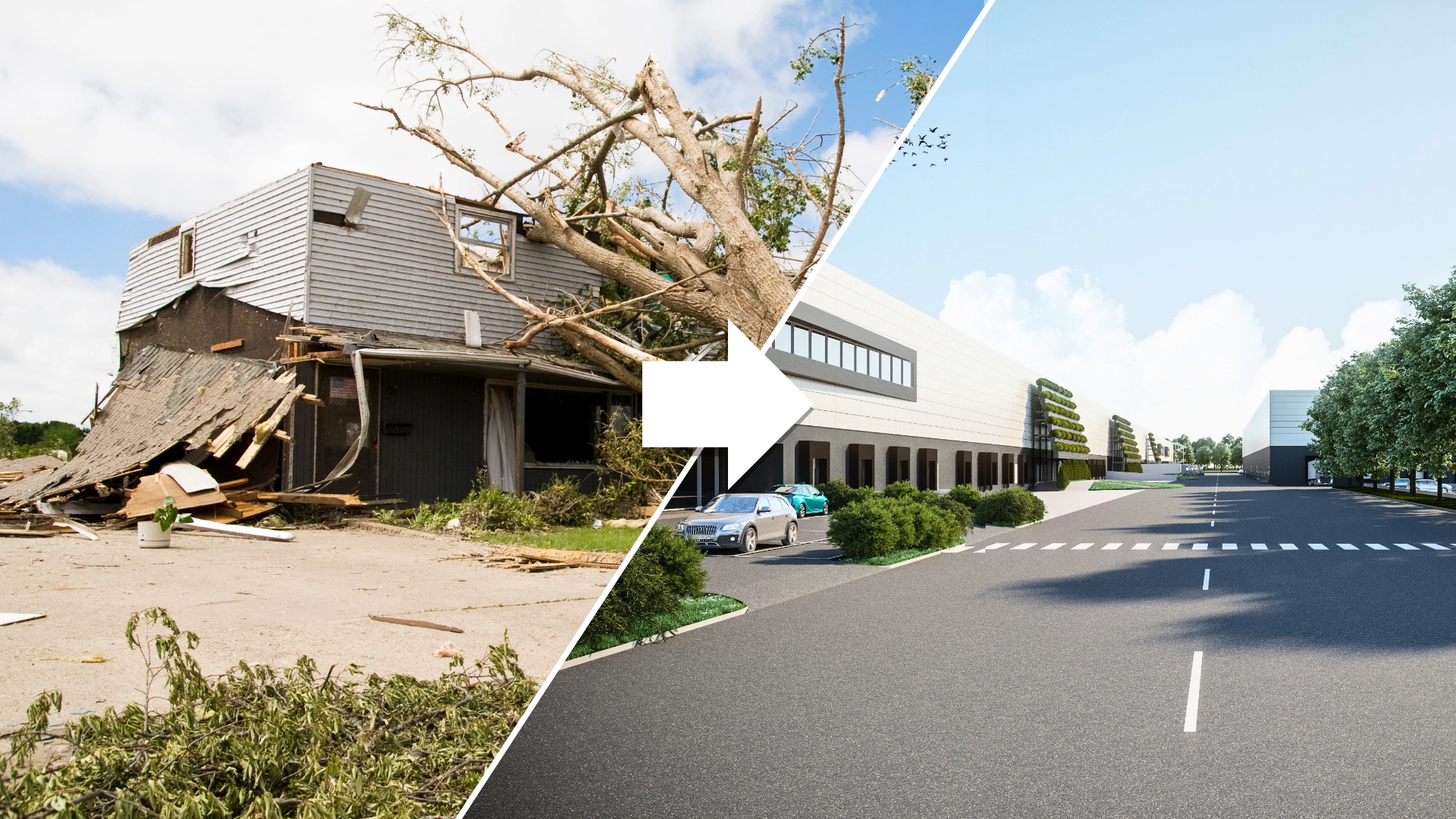Brownfield vs greenfield: the challenge is still open.
The use of “greenfield” land refers to the orientation that drives some companies to conduct their operations in so-called virgin areas, because they are pristine and have never been used for industrial purposes. The concept of a “brownfield” land use, instead, refers to project interventions on previously developed land where they are located disused buildings and therefore already contaminated by anthropogenic impact, with a view to “zero land consumption.” The trend recorded in recent years, in a notoriously impactful sector such as logistics, is a growing awareness and attention towards compliance with ESG criteria from a sustainable development perspective; the latter, pursued through a preference for interventions that are sustainable from both an environmental, social and economic point of view. This concept, dropped into the logistics sector, takes on an even more significant role; in fact, this sector is realized through the design and construction of properties that have a significant impact on the territory in which they are placed. The predilection toward “brownfield” areas, then, causes properties designed for light-industrial to be designed and built.
The benefits and challenges associated with using brownfields.
The use of a brownfield has numerous environmental and social benefits and unquestionable advantages for the stakeholders who are involved in various capacities in the intervention. First, this choice not only allows for the demolition of structures that are now completely obsolete from a technological and functional point of view, but also offers the opportunity to create a new building that succeeds in meeting the needs of the client through innovative technologies and materials that ensure a reduced environmental impact throughout the building’s life cycle, as well as a new social and commercial thrust. The new buildings thus allow for increased housing capacity and the implementation of new jobs, all while experimenting with design solutions that restore architectural dignity to the entire context and often becoming part of urban regeneration processes. This type of intervention involving the use of previously urbanized land also makes it possible to:
- Avoiding the development of environmentally sensitive land;
- Limit the building footprint to the previously developed area;
- Encourage the reuse of existing infrastructure;
- Reduce the environmental impact of building ex novo in ecologically sensitive areas.
In addition to these benefits related to the territory as a whole, there are others that benefit the developer who acquires the credit of having elevated a completely disused asset, repurposing it into something alive. As tangible as the benefits just listed are, so too are the obstacles that relegate similar interventions to a secondary slice of investment in our country. The difficulties one faces when deciding to approach the brownfield world can be summarized in the following:
- developers and tenants have tended to be reluctant to turn their interest in brownfield interventions because of an issue related to the high costs associated with the various operations required for similar developments;
- choosing an existing property is often equivalent to having to contend with its problematic past, for example, because activities deemed dangerous to the environment took place inside it;
- property renovation and refurbishment activities involve high costs, as well as environmental investigations preceding the demolition phase that are very laborious and sometimes detect large problems that are difficult to resolve;
- current legislation does not provide much incentive to use brownfields; the laws enacted to date on the subject do not streamline processes in any way.
Best practices for a truly green future.
The question perhaps arises: what to hope for in the future? There are a variety of answers to this question, all of which can perhaps be summed up in the hope that more and more companies embedded in the supply chain will decide to implement logics aimed at ensuring development that is deemed by all to be truly sustainable. Pursuing economic developments must be able to coexist with the need to avoid wasting virgin soil, to implement conscious choices during the various phases involved in the design and construction of a property, to share governance principles that are espoused as much as possible by all stakeholders involved.










